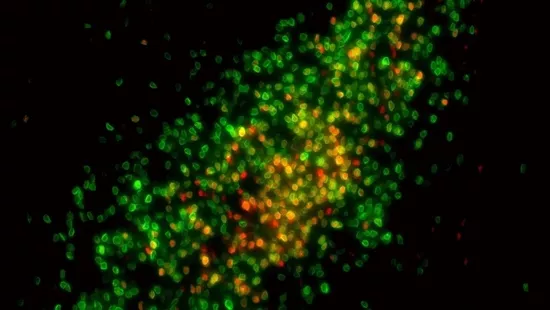For a large number of animals, including us, the shaping of individual behavior is inseparable from the regulation of sex hormones. Since birth, surging estrogen levels have shaped neural circuits in the developing brain, a process that can have a lifelong impact and explain the large differences in brain structure and behavior between the sexes.
How can we explain all this from the perspective of genetics? Scientists already know that estrogen controls the expression of multiple genes in the brain: when activated estrogen receptors directly bind to DNA in neurons, they can act as a gene switch to manipulate gene expression.
But the unknown question is, which neurons do these estrogen receptors act on, and how do they cause gender differences?
In a new study published in nature, Jessica tollkuhn, an assistant professor at the Cold Spring Harbor Laboratory (CSHL), led the team to answer this question. They revealed how an extremely short process at the beginning of life can have a lifelong impact.

In the experiment, Professor tollkuhn's team studied mice and the main regulatory factor of gender differences in mouse brain: estrogen estradiol. They observed male and female mice respectively, and compared the brains of adult individuals with those of developing young individuals, from which they found the regions regulated by estradiol receptors in the brain.
Whether male or female, estrogen appears and plays an important role in the brain of mice. For male mice, a brief process had additional effects at birth. The testosterone level of mice showed a surge period lasting only a few hours. Because some neurons can use testosterone to produce estradiol by themselves, the estrogen level of male mice also showed a short surge, which also played a role in shaping the developing neural circuit.
As a result, certain brain regions in male mice became larger and contained more neurons. Such differences directly affect a range of behaviors in adulthood, including mating, offspring rearing and aggression.

"There is a critical period in the development of the brain, when neural connections begin to form, which can cause permanent structural changes. This short hormone surge has a lasting impact on brain development." Professor tollkuhn said.
The team examined the specific location of estrogen receptors in the brain after the hormone surge. They focused on a brain region called the bed nucleus of the stria terminalis (BNST), which is larger in males / males than in females / females, both in mice and humans.

▲ the brain area of the bed nucleus of stria terminalis in male mice is larger, and a large number of neurons can produce estrogen receptors (picture source: Bruno gegenhub / tollkuhn Lab / CSHL, 2022)
The team also found that a large number of genes are controlled by estrogen, including many genes involved in neural development and neural signals. Although these estrogen hormones stay in the brain for only a few hours, these hormone regulated genes can be active for weeks and continue to affect the formation of neurons.
Therefore, this study reveals the specific brain regions and related genes regulated by estrogen in the brain. Next, Professor tollkuhn's team hopes to further understand how these genes regulate the multiple effects of estrogen on brain development, behavior and disease.
reference material:
[1] B。 Gegenhuber et al。, Epigenetic regulation of brain sexual differentiation by estrogen receptor alpha。 Nature (2022)。 https://doi.org/10.1038/s41586-022-04686-1
[2] Cold Spring Harbor Laboratory discovers how hormones define brain sex differences。 Retrieved May 4th, 2022 from https://www.eurekalert.org/news-releases/951223